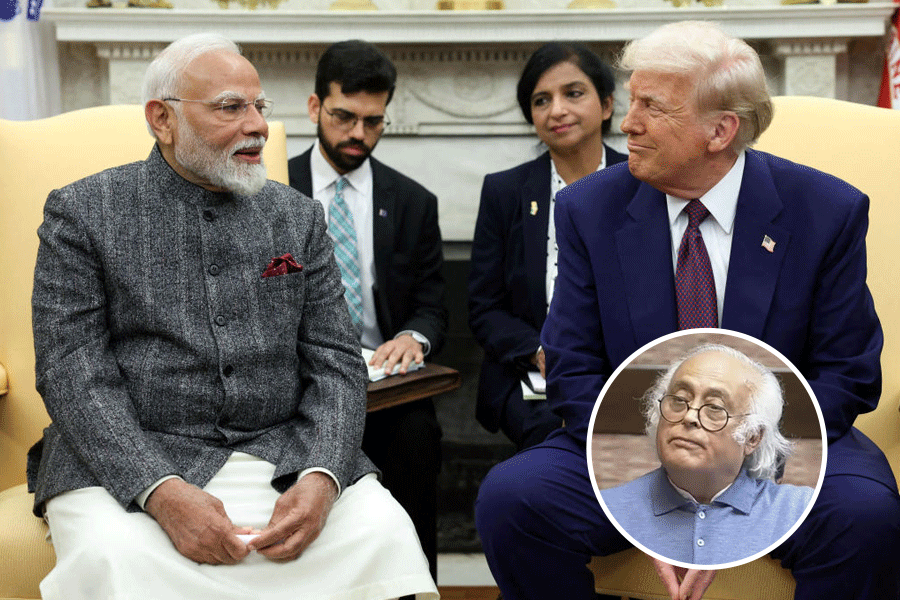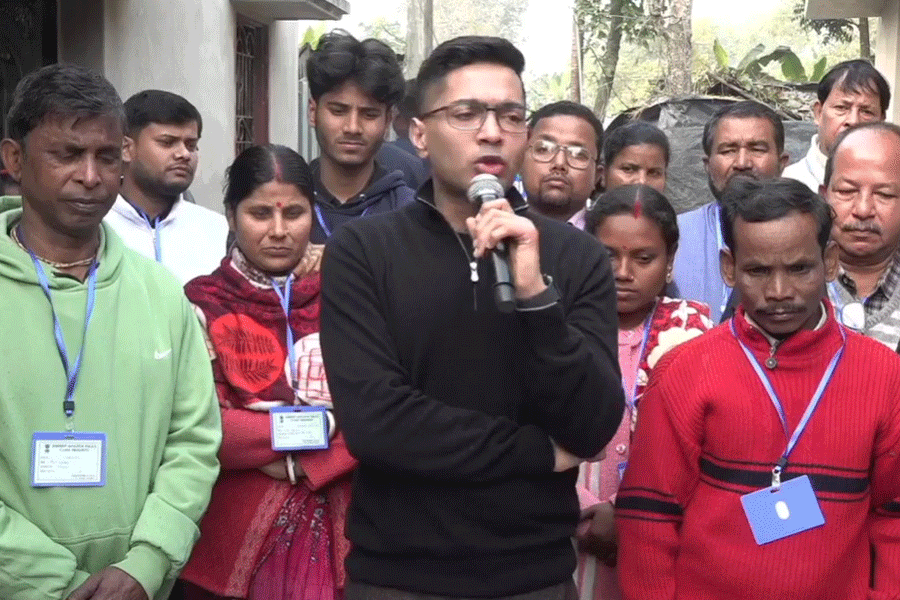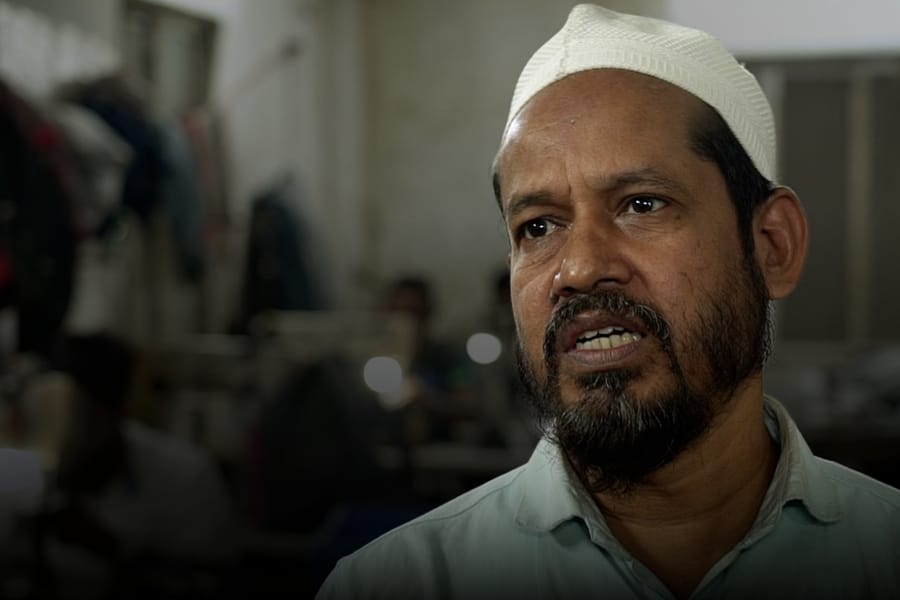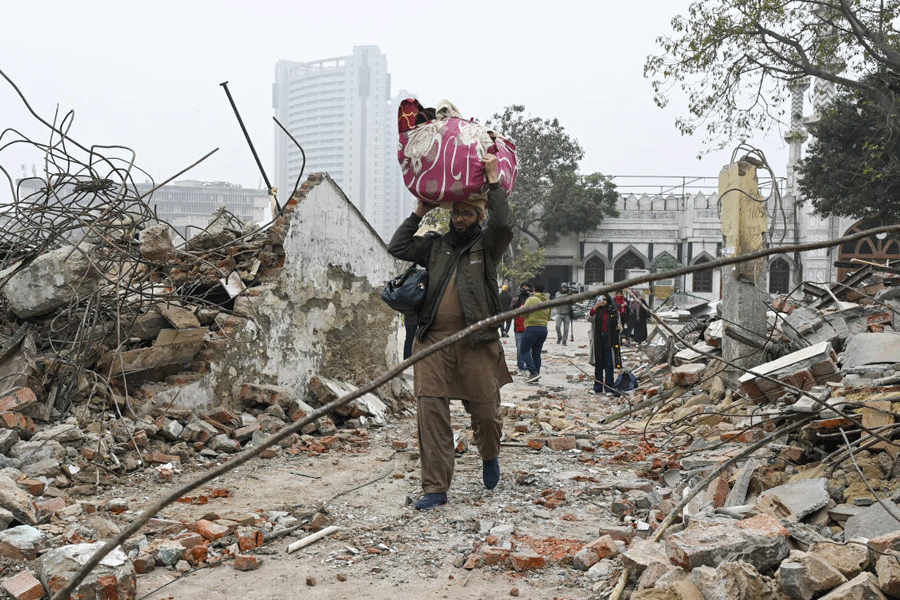 |
New Delhi, April 3: Like the famous Agatha Christie novel — albeit more poignant than macabre — the 19th congress of the CPM ended today on a chapter that could well be titled And Then There Were None....
With the formal exit of Harkishen Singh Surjeet and Jyoti Basu from the politburo, the CPM leadership is now bereft of its founding fathers for the first time since the party’s fractious birth 44 years ago.
Since stepping down as general secretary three years ago, Surjeet’s mental and physical health witnessed a sharp decline and his retirement, therefore, has not come as a surprise. Although two years older than Surjeet, Basu remains mentally alert and the Bengal unit, sources said, was loath to let him go. But Basu’s repeated plea to be relieved from the politburo finally got a nod.
He has been made a special invitee to the politburo while Surjeet has been given the honorific of “special invitee to the central committee” — a conferment of “emeritus” status of sorts by a much younger leadership who have now gingerly stepped out of the shadows of the men who made them.
In CPM legend, the nine men who formed the first politburo of the party enjoy an iconic status which has not been dimmed by either death or deviation.
The bitter inner-party struggle within the CPI in the early sixties, exacerbated by the Sino-Soviet conflict in world communism and India-China border conflict in 1962, is still talked about with awe and animation — as though it were the closest equivalent to the party’s version of the October Revolution or the Long March.
Old-timers recall the furious debates and the clandestine discussions that preceded the momentous day on April 11, 1964, when 32 members belonging to the “Leftist” fraction walked out of the CPI national council, and then organised their own conference at Tenali in Andhra Pradesh later that year.
It was at the Tenali conference that the decision to break away from the “revisionist” CPI was taken but the Communist Party of India (Marxist) formally came into being at the seventh congress in Calcutta that took place from October 31 to November 7, 1964.
The nine leaders who formed the first politburo — most of them better known by their initials — were: P. Sundarayya (PS), M. Basavapunniah (MB), E.M.S. Namboodiripad (EMS), A.K. Gopalan (AKG), B.T. Ranadive (BTR), P. Ramamurthi (PR), Pramode Dasgupta (PDG), Jyoti Basu and Harkishen Singh Surjeet. The last two, for some odd reason, were never referred to by their initials.
The “founding fathers”, as they came to be known in later years, provided a collective leadership that remains unparalleled in the history of Indian politics. Some of them were ideologues (MB, EMS, PR), others were principally men of organisation (PDG, most of all) and at least two were famous for combining both attributes — PS and BTR. There were mass leaders among them — AKG and Basu — and Surjeet (the “baby” of the politburo in 1964) had, even back then, the ability to get on with politicians of a more bourgeois persuasion.
These nine men had spent many years together — in struggles and party meetings, in jail and underground — since the time of the freedom movement and their shared battle against “revisionism” drew them still closer. Before the CPM quite got off the ground, it met with another split — when the “Naxalites” broke away — and this only cemented the bond among the politburo members further.
But it wasn’t as though there were no differences among them. The first general secretary, Sundarayya, did not agree with the decision to transform the CPM into a “mass party”. His ideological difference with the party eventually led him to give up the post of general secretary and resign from the politburo during the Emergency in 1976. He was formally replaced with Namboodiripad at the party’s post-Emergency 10th congress in Jalandhar in 1978.
Sundarayya was the first founder politburo member to leave the party’s highest decision-making body well before his death in 1985. But the first who died “in saddle” was the beloved mass leader Gopalan who passed away in 1977, followed by Dasgupta in 1983.
Apart from Sundarayya, P. Ramamurthi — trade unionist and parliamentarian from Tamil Nadu — also left the politburo (for reasons that remain rather opaque to this day) well before his death in 1987. The other stalwarts — Ranadive, Basavapunniah and Namboodiripad — left one by one through the 1990s only after death intervened. Surjeet and Basu are the only ones to have “retired”, but then they had the longest innings.
More than establishing the CPM as the most “successful” formation in the schism-ridden communist movement in the country, the greatest achievement of the founding fathers — party members often insist — was their ability to spot new talent and nurture young cadres into leaders. And unlike leaders in other parties who zealously guard their loyalists, the CPM top brass took a collective hand in building a future line of leadership.
Prakash Karat, for instance, regards Sundarayya as his mentor but he also served as parliamentary secretary to Gopalan and, after joining the party centre, always accompanied Namboodiripad to news conferences and political meetings — imbibing ideological and organisational skills from a variety of leaders.
Dasgupta, famously, groomed the Buddha-Biman-Anil trio in Bengal but post-1983, Basu became an inspiring, if laconic, guru.
And Sitaram Yechury was considered a Basavapunniah acolyte but also learnt the art of dealing with other parties in a coalition era as an understudy of sorts to Surjeet through the turbulent mid-nineties.
Now that the “old guard” that guided the CPM from its inception has slipped into the twilight, the real challenge before the new but not-so-young leadership is to emulate their predecessors in finding a new line of successors. In today’s world, that is a tough call. Venezuela, after all, is no Vietnam….












